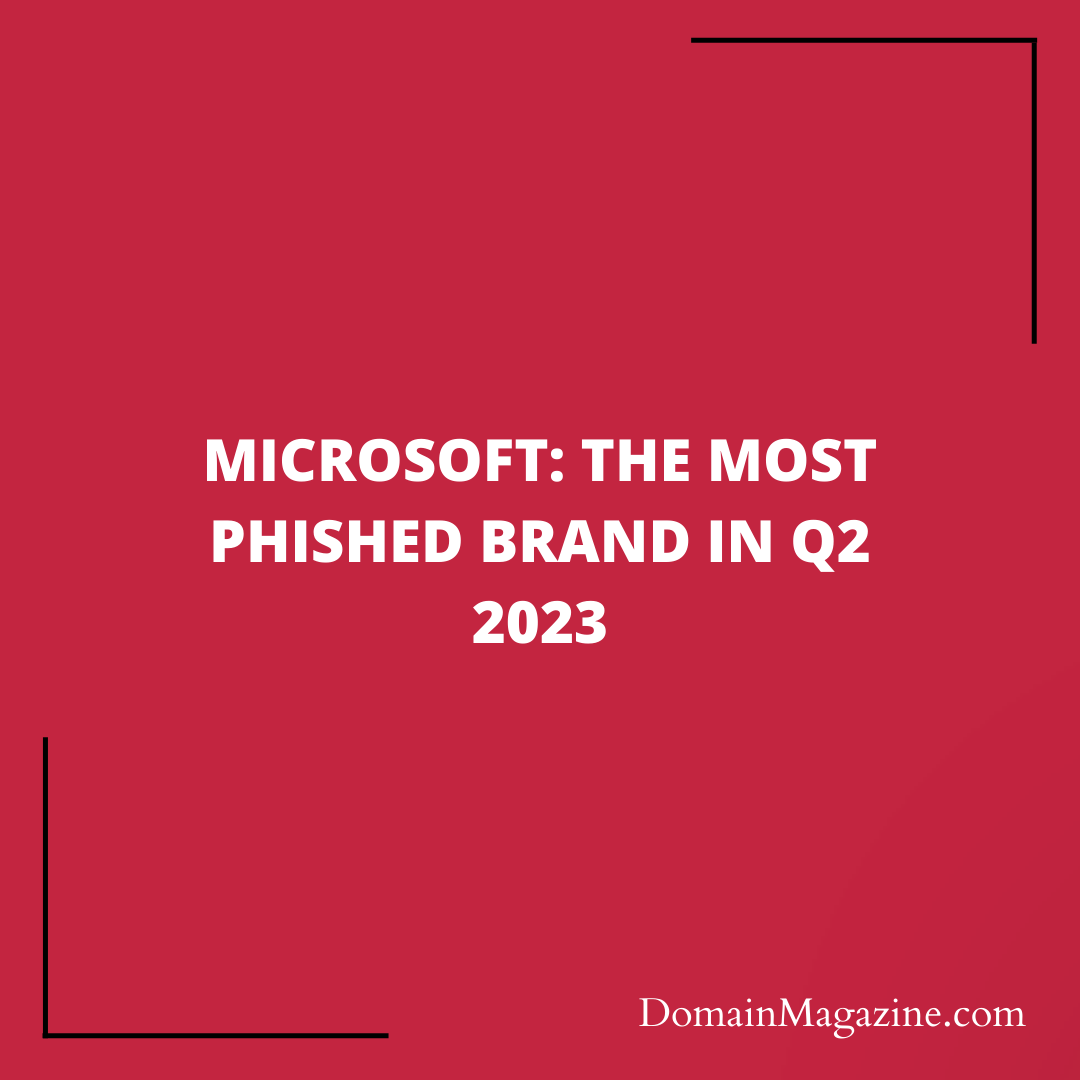In the rapidly advancing digital landscape, cybercriminals are incessantly devising new techniques to exploit unsuspecting individuals and businesses. As evident from the Q2 2023 Brand Phishing Report, the art of brand impersonation has reached alarming levels. During this period, we witnessed global technology behemoth Microsoft ascend to the top spot, with 29% of all phishing attempts dedicated to imitating the tech giant. This article delves into the key findings from the report and explores the implications of this dangerous trend.

Microsoft’s Surging Dominance
Microsoft’s meteoric rise to the number one spot in brand phishing attempts should raise concern among users and corporations alike. As the report indicates, cybercriminals deployed a cunning campaign that preyed on account holders, employing fraudulent messaging about unusual activity on their accounts. The phishing emails purportedly came from within the company, creating a false sense of security with sender names like “Microsoft on <company domain>.” By urging recipients to review their activity through malicious links, the hackers sought to gain unauthorized access to personal credentials and sensitive information.
The Ever-Present Threat: Industry Impersonation
The technology sector faced the brunt of brand phishing attempts in Q2 2023, underscoring its perpetual attractiveness to cybercriminals. Following Microsoft’s lead, Google and Apple were the next most impersonated brands at 19.5% and 5.2%, respectively. Social media networks and banking institutions were also popular targets, with Wells Fargo claiming the fourth spot due to a malicious email campaign requesting account information. The allure of global brands like Walmart and LinkedIn remains unyielding, ranking sixth and eighth, further confirming the resilience of familiar logos in phishing schemes.

The Pervasive Modus Operandi
The report highlights the consistent tactics employed by cybercriminals in brand phishing attempts. Deceptive emails flood inboxes, often replete with bad grammar and language aimed at inducing an instant response. The relentless use of reputable logos has proved to be an efficacious ploy, tricking individuals into divulging personal information or unwittingly clicking on malicious links.
Vigilance is Key: Combating Brand Phishing
To effectively combat brand phishing, vigilance stands as the critical linchpin. Users and organizations must be steadfast in their commitment to recognizing and thwarting phishing attempts. Individuals should exercise caution and skepticism when encountering suspicious emails, taking a moment to carefully inspect sender details, language, and any urgent requests. The ability to discern between legitimate and fraudulent communications can help prevent falling into the cybercriminals’ traps and safeguard personal information.

Additionally, ongoing education and awareness play a pivotal role in equipping users with the knowledge needed to identify phishing red flags. By staying informed about the latest phishing tactics and trends, individuals can fortify their defenses against these ever-evolving threats. Organizations should conduct regular training sessions to ensure employees are well-versed in recognizing and reporting potential phishing attacks. Moreover, implementing advanced security technologies, such as AI-powered engines and real-time threat detection, empowers businesses to preemptively block malicious emails before they can ensnare unsuspecting victims.
Collaboration between individuals, organizations, and cybersecurity experts is paramount in building a robust defense against brand phishing. By sharing information, best practices, and emerging threats, the collective effort can stay one step ahead of cybercriminals. Adopting multi-layered security strategies that encompass strong email filtering, robust anti-phishing solutions, and continuous monitoring will significantly bolster the collective ability to combat brand phishing effectively. Together, a united front can safeguard the digital ecosystem, mitigate risks, and protect against the devastating consequences of brand phishing attacks.
Conclusion
As cybercriminals continue to innovate, brand phishing remains an ever-looming threat in the digital landscape. The Q2 2023 Brand Phishing Report serves as a stark reminder of the need for vigilance and fortified defense mechanisms. Both individuals and organizations must exercise caution and adopt advanced security technologies to ensure they are well-prepared in the ongoing fight against cyber adversaries. Only by collaborating and staying ahead of cybercriminals can we safeguard personal information, payment credentials, and protect our digital ecosystem from these nefarious attacks.


Join the Discussion